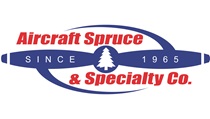
Savvy Maintenance: Buy...or walk away?
When to purchase and when to pass

Common sense says if you find one, there’s probably a good reason it’s underpriced—maybe lost logbooks, major damage history, wing spar corrosion, an expensive airworthiness directive that hasn’t been complied with, or some other big-time skeleton in the closet.
My aircraft appraiser friend Brian Jacobson tells the colorful story of a fellow who bought a gorgeous piston twin in the mid-1970s. It was just two years old and had less than 100 hours on the Hobbs meter, and the new owner bragged about what a “steal” he’d gotten. Then he tried to get the airplane added to the Part 135 certificate of his local FBO, and the aircraft’s true story came to light.
It seems that at just 38 hours since new, the original owner of the twin ran it off the end of a short runway and into a water-filled drainage ditch. The aircraft sat partially submerged for two weeks until the insurance adjuster arrived and declared it a total loss. Some enterprising outfit purchased the wreck as salvage, repaired it, put a sharp-looking fresh paint job on it, and sold it to the bargain-hunting new owner.
The FBO’s mechanics found corrosion throughout the airframe. The avionics were plagued with problems traced to corrosion. The FBO’s charter pilots insisted that the airplane never did fly right, and avoided it whenever they could. Ultimately, the FBO dropped this lemon from its charter fleet.
The owner tried to sell the problem-plagued twin, but never could find an interested buyer. Two years later the owner had a double engine failure and ditched the aircraft in Cape Cod Bay. The owner was rescued by the Coast Guard. The airplane wasn’t.
Nothing’s perfect
This was an extreme case. Many of the aircraft advertised for sale are in reasonable shape, decently maintained, and worthy of consideration. But if you expect them to be in pristine condition—or even in as good condition as represented in the ads—you’ll probably be disappointed.
If you have your heart set on buying a perfect airplane, you’d better buy a new one and be prepared for sticker shock. A well-equipped new Cessna 182T costs a half-million bucks these days, and a Beechcraft Baron G58 will set you back almost $1.5 million. If this is above your pay grade (and it is way above mine), you need to accept the fact that any “preowned” airplane you buy will be somewhat less than perfect.
There’s nothing wrong with buying a “fixer-upper” so long as you go into the deal with your eyes open, understand what it will cost to do the fixing, and feel confident that this cost is adequately reflected in the negotiated purchase price.
High-time engine
Some kinds of deficiencies are easier to deal with than others. The easiest of all is an airplane with a high-time engine that’s close to (or beyond) TBO. It’s easiest because engine time is almost always fully reflected in the selling price. An aircraft with a run-out engine is almost always priced sufficiently below the price of a comparable aircraft with a zero-time engine to account for the cost of an engine overhaul or exchange.
I bought my own airplane with run-out engines, and I’m convinced that doing so has advantages. One is that you get to choose what kind of engine you want: field-overhauled versus factory rebuilt, nickel cylinders versus steel, Teflon hoses versus rubber, et cetera. You also decide when to do this: I opted to fly my run-out engines 500 hours past TBO before overhauling, which turned out to be a windfall profit.
Another advantage of buying an airplane with a run-out engine is that the seller is probably motivated to sell, and so may be a bit more flexible during price negotiations. I’m always suspicious when I see an aircraft listed for sale with a “fresh overhaul” or unusually low engine time. I can’t help but think that the seller most likely knew he was about to get rid of the airplane when he had the engine overhauled, and it seems to me it would be mighty tempting to cut corners.
Most aircraft listed for sale have engines somewhere in between a fresh overhaul and “run-out.” The problem here is that it’s often impossible for the buyer to know how much time he can expect to get out of the engine before overhaul. You’re paying a price that anticipates that the engine will make it to TBO, but for all you know it might start making metal two months after your purchase. (If that happens with a run-out engine, it’s more or less expected and you have the comfort of knowing that it was fully depreciated when you bought it.)
Bottom line: I think the best way to buy a used aircraft—all other things being equal—is to buy one with a high-time engine, plan to overhaul it or swap it for a factory engine shortly after the purchase, and make sure the cost of doing so is factored into the selling price.
High-time airframe
An airframe with beaucoup hours is more complicated. Unlike engine time, airframe time cannot be easily rolled back by doing an overhaul.
High airframe time isn’t necessarily a bad thing. A high-time airframe has probably been flown regularly and often throughout its life, and that’s good. A high-time airframe often signifies a working airplane (flight school, charter, cargo), and such aircraft tend to receive better and more regular maintenance than owner-flown hangar queens.
An airframe with unusually low hours is often one that has experienced lengthy periods of disuse, and unless the aircraft was based in a dry climate or stored in a heated hangar, it’s a likely candidate for hidden corrosion damage. (A low-time airframe from Florida is likely one you should pass on.)
Interestingly, low-time airframes tend to command premium prices. I’m not sure that’s rational—but market forces are often not rational. Personally, I’d be more comfortable buying a 25-year-old airplane with 4,000 hours on the airframe (average 160 hours a year) than a 25-year-old airplane with 1,000 hours on the airframe (average 40 hours a year). I’d want more information about how those hours were distributed over the aircraft’s life, whether there were extended periods of disuse, whether the aircraft was hangared or tied down outdoors, whether it was based in Tampa or Tucson, et cetera.
Very high-time airframes are another matter, however. Some airframes, such as high-wing, strut-braced Cessna singles, pretty much last forever if adequately protected from corrosion. For cantilever-wing airframes without struts, there is increasing concern over the useful fatigue life of wing spars and spar carrythrough structures, particularly Bonanzas and Barons and twin Cessnas. For these aircraft, very high-time airframes are best avoided.
Bottom line: You probably shouldn’t pay a big premium for an ultra-low-time airframe, and might even do well to be a bit suspicious of one. A mid-time airframe—with hours commensurate to its chronological age, indicating that it has been flown regularly and often—may be a worthier candidate, not to mention a better bargain.
Older aircraft
Market valuation of airplanes tends to drop precipitously with calendar age, and you occasionally see older aircraft for sale that have been well maintained, are corrosion-free, and are offered at what seem to be screaming bargain prices. My advice to all but the most experienced aircraft buyers is to be wary of older airplanes, particularly complex ones. An older aircraft can easily turn into a money pit—which may be precisely why it’s for sale.
You may figure that if the selling price is cheap enough, you can afford to spend the money to refurbish that older airplane into something really nice. In truth, by the time you replace the engine, do paint and interior, replace those old radios with modern ones, and install a decent autopilot, your “better than new” refurbished airplane won’t be worth anything close to what you have invested in it. Unless you’re sure that you’ll be keeping the airplane for many years, this is probably not a good strategy.
Unless you’re an A&P with lots of free time and looking for a “project airplane,” my advice is generally to buy the latest model year you can reasonably afford, and avoid aircraft requiring high-ticket refurbishment.
Outdated avionics
We’re in the midst of a major avionics revolution. Steam gauges are out; glass is in. Terrestrial navaids are being phased out; Wide Area Augmentation System and Automatic Dependent Surveillance-Broadcast are becoming indispensable. Unless you’re buying an aircraft of very recent vintage, chances are that any candidate you choose is going to need significant upgrading in the electronics department.
Still, it’s best to find an aircraft with reasonably up-to-date avionics and minimize the amount you’ll have to spend on electronics refurbishment. Installing a new autopilot is especially expensive, and it’s a big plus if you can find an aircraft that already has a decent autopilot installed.
Worn paint or interior
Don’t hesitate to buy an aircraft just because the paint or interior is getting long in the tooth. Inexperienced buyers tend to get hung up on cosmetics. What really counts is what’s under the paint and beneath the carpets. I’d buy a mechanically sound, corrosion-free airplane with shabby paint and interior in a heartbeat.
Think of paint and interior like you think of engines: something that wears out and should be redone every decade or so. It makes more sense for the buyer to do this after the sale than for the seller to do it beforehand. After all, shouldn’t the new owner get to pick the paint colors and upholstery materials?
Much like engine time, the cost of paint and interior tends to be well reflected in the aircraft selling price. If you buy an aircraft with a fully depreciated paint job, you can reasonably expect the selling price to be discounted enough to compensate for a substantial portion of the cost of repainting.
Mechanical discrepancies
You’ve found an airplane you really like, but the prebuy exam turns up some significant mechanical discrepancies. Now what do you do?
That’s easy: Talk to your mechanic and determine what it will cost to correct the problems. Then present the inspection findings and repair estimates to the seller, and see if he’s willing to reduce his selling price enough to cover all, or at least most, of the repair cost. If so, you’ve got a deal; if not, you may want to find another aircraft.
Some discrepancies—corrosion damage to a wing spar, for example—may be so costly to repair that they’re obvious deal-breakers. But most discrepancies—say, a soft cylinder or an inoperative autopilot servo—should be easily resolvable.
I’ve seen a prospective buyer of a half-million-dollar airplane walk away because the prebuy revealed two cylinders with low compression. That’s nuts, in my view. The cost of replacing two jugs is less than 1 percent of the purchase price. Good, clean, mechanically sound, corrosion-free airplanes are getting hard to find, so don’t let a good one get away because of a problem that’s easy to fix.
Mike Busch is an A&P/IA. Email [email protected]



